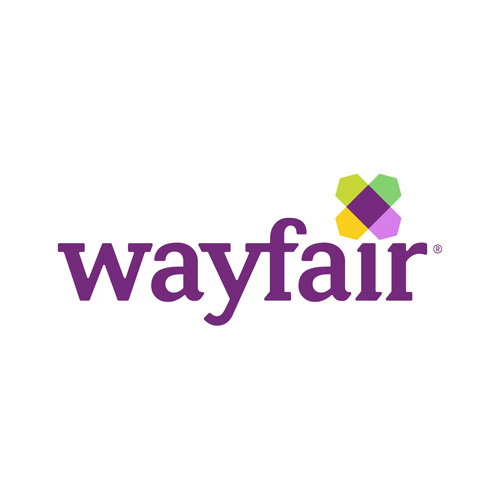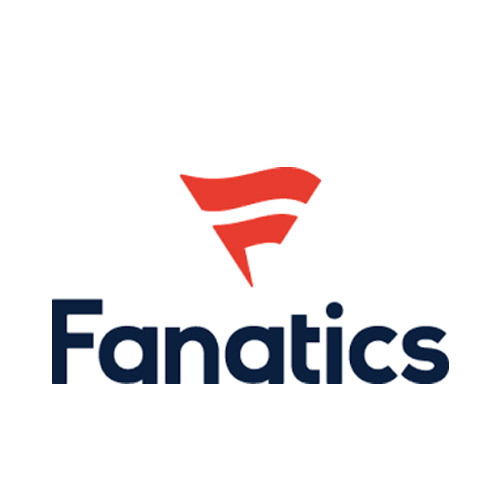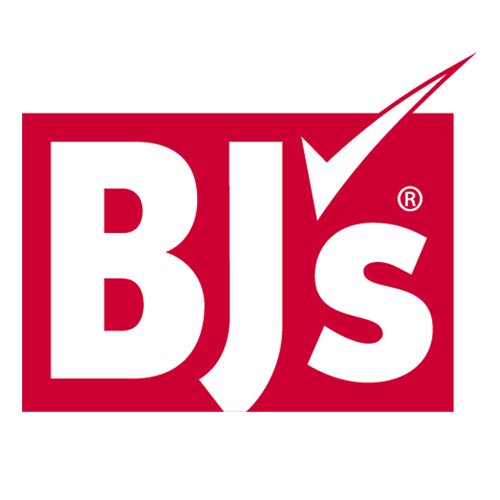The Hidden Gem
on the U.S. East Coast
- Home
- >
- Cargo Blog
- >
- The Hidden Gem on the U.S. East Coast
JAXPORT’s Transportation & Logistics Ecosystem Creates Efficiencies and Cost Savings for Shippers
When it comes to building a supply chain – shippers and BCOs are searching for the ultimate treasure: a location that offers global connections, efficient intermodal operations, competitive rates, high-quality service and quick reach to their customers. It’s much like searching for the infamous ‘X’ on a treasure map, where X marks the spot.
Logistics executives are increasingly finding that elusive bundle of transportation benefits in Jacksonville, Florida at the Jacksonville Port Authority (JAXPORT).
Table of Contents
A hidden gem on the U.S. East Coast, JAXPORT is strategically located at the crossroads of the nation’s highway and rail network and within a day’s drive of more than 70 million consumers. The list of companies achieving success in Jacksonville includes many household names, but for some, the Southeast port is new on the radar.
A 2018 survey of logistics professionals found that 42 percent of those surveyed were unfamiliar with JAXPORT. “If you know us, you love us,” said Robert Peek, Director/General Manager of Sales & Marketing at JAXPORT. “But there are many who don’t know us.”
The following stories reveal the seamless transportation experience found through JAXPORT – the global gateway to Florida and inland U.S. destinations – where there is a skilled workforce with a collaborative spirit to optimize end-to-end supply chains for shippers both large and small.
Sample of Companies using NE FL Distribution




















Unlocking JAXPORT’s Logistics Ecosystem
“Jacksonville is an untold story,” Peek said. “The biggest question we get from companies in the industry is: What does Jacksonville have to offer end to end?” The answer, he said, is an unparalleled transportation ecosystem comprised of experienced service providers dedicated to the efficient movement of cargo.
JAXPORT’s “ecosystem” is helping the industry find cost advantages, expedite connectivity and reliability, as well as deliver unique opportunities to carriers as well as BCOs.
The ‘ecosystem’ terminology is a concept to describe all Jacksonville has to offer shippers: a strategic location in the growing Southeast U.S., ocean connections to/from 140 ports around the world; intermodal connections to key markets including service by two Class I rail lines and regional rail; and an expansive network of service providers – from 100 trucking firms to dozens of freight forwarders and 3PLs – ready to safely and efficiently move cargo.
JAXPORT’s team of experienced logistics professionals is providing shippers with innovative solutions to help grow their business and bottom line by putting the ecosystem to work for them. From a strategically placed distribution center to backhaul opportunities and more – taking a deep dive into the ecosystem can increase efficiency and reduce the cost of your business’ supply chains.
Quick Reach to a Growing Consumer Base
Population growth is driving consumption in Florida. JAXPORT’s strategic location at the nexus of the nation’s Southeastern highway and rail network provides shippers with seamless and efficient connections to this growing consumer base. Cargo moving through Jacksonville can quickly be deployed to key locations in Florida including Orlando, Lakeland, Titusville and Tallahassee, as well as to DCs in the southern part of the state.
Florida Population
Rich Doty is Geographic Information Systems Coordinator and Research Demographer for the Bureau of Economic and Business Research (BEBR) at the University of Florida. He said the population of Florida is expected to reach 21.2 million in late 2019 – up an estimated 1.8 million from Q1 of 2019. This does not include seasonal residents and tourists – and there are as many as 126 million visitors to the state each year.
BEBR does the official population projections for Florida on behalf of the legislature. “At a state level, our 2030 projection is to reach 24.4 million and our 2040 projection is 26.5 million people,” said Doty. He predicts in total population, “Florida will overtake Texas and maybe California in my lifetime.”
Florida has a unique offering for exporters: backhaul opportunities.
These opportunities may be location-specific and sometimes product-specific for trucking and rail, but there are many. “We don’t want to see equipment leave the state empty,” said Aisha Eccleston, JAXPORT’s Director of National Container Accounts.
“A properly positioned transload facility in Jacksonville can use empty equipment to offer better northbound and southbound economics than our competitors,” Eccleston said, so, if an inland backhaul rate in Jacksonville is a fraction of the going rate at a competitive port, as is often the case, JAXPORT will help find it. “That’s our strength,” she said.
Room to Grow: Ample Warehousing & Distribution Space
Northeast Florida’s rapidly growing warehousing and distribution center sites, with more than 138 million square feet of space, support the port’s growing capacity with ample room to expand.
In the past year, the region has added a number of distribution centers for household names including Amazon, Wayfair, Ulta and Cra-Z-Art. These companies join a long list of others finding success in Jacksonville including Bridgestone Americas, Bacardi USA, Coach, Mercedes, Sysco and more. For Canadian-based online furniture retailer Article, a strategically placed DC in North Florida has expedited shipping times to its Southeast consumer base. Article’s Co-founder and CEO Aamir Baig has said the 300,000-square-foot Jacksonville DC allowed the company to “reduce delivery times in the Southeast region by three days.”
Peter Anderson is Vice President of New Investments, Coastal Markets, with Pattillo Industrial Real Estate, a leading Southeast industrial real estate developer. Anderson said, “The Jacksonville community works hard to attract manufacturers and distributors to the area. We all row in the same direction, knowing our mutual success is dependent on the efforts of each other.”
Anderson said Jacksonville has millions of square feet of large distribution center buildings available or under construction, offering many options for prospect companies. “Jacksonville also has thousands of acres of development-ready industrial land with good proximity to the port available for further development,” he said.
“The other comparable port communities in the Southeast do not have the industrial land availability that is found in Jacksonville. Land pricing in Jacksonville is also lower than competitive port markets such as Miami and Everglades, Tampa, Savannah and Charleston, thus building rental rates tend to be lower than buildings found in those markets,” Anderson pointed out.
He added that experience, well-capitalized developers, a pro-business attitude, and reasonable impact fees help make the local real estate market very competitive.
For Canadian-based online furniture retailer Article, a strategically placed DC in North Florida has expedited shipping times to its Southeast consumer base. Article’s Co-founder and CEO Aamir Baig has said the 300,000-square-foot Jacksonville DC allowed the company to “reduce delivery times in the Southeast region by three days.”
Peter Anderson is Vice President of New Investments, Coastal Markets, with Pattillo Industrial Real Estate, a leading Southeast industrial real estate developer. Anderson said, “The Jacksonville community works hard to attract manufacturers and distributors to the area. We all row in the same direction, knowing our mutual success is dependent on the efforts of each other.”
Anderson said Jacksonville has millions of square feet of large distribution center buildings available or under construction, offering many options for prospect companies. “Jacksonville also has thousands of acres of development-ready industrial land with good proximity to the port available for further development,” he said.
“The other comparable port communities in the Southeast do not have the industrial land availability that is found in Jacksonville. Land pricing in Jacksonville is also lower than competitive port markets such as Miami and Everglades, Tampa, Savannah and Charleston, thus building rental rates tend to be lower than buildings found in those markets,” Anderson pointed out.
He added that experience, well-capitalized developers, a pro-business attitude, and reasonable impact fees help make the local real estate market very competitive. 
Finding Savings in JAXPORT’s FTZ No. 64
Operating in a Foreign Trade Zone (FTZ) is a cost-saving tool for shippers moving cargo through JAXPORT. The port has FTZ expertise in-house in searching for opportunities on behalf of customers as well as facilitating the process to deliver FTZ status and savings.
Businesses with just the right combination of product values, manufacturing waste, duty rates, number of “entries”, and proportion of exports/re-exports, can benefit substantially from FTZ use. Third-party logistics providers (3PLs), distribution centers and manufacturers all stand to profit.
Those merchandise imports subject to higher duties tend to find great value in an FTZ, and, in this current era of duty and counter-duty uncertainty, the FTZ is an attractive tool for businesses. If a company is unsure of its product’s turn time, if it doesn’t plan to use the product right away, if a duty rate is likely to change, and if a quota has been open for a while and a duty rate is set to spike, using an FTZ affords flexibility to stockpile for a while, or otherwise strategically time an entry, while still having control of the cargo.
Lynn Baltz is Vice President of Southern Operations for J.F. Moran Co Inc. The company’s unique FTZ site handles vehicles to be exported.
“The Jacksonville gateway provides quicker avenues to parts in the Southeastern U.S.,” said Baltz. “Quick access to I-95, I-10, I-75, and our rail accessibility, makes it easy to reach inland markets.”
Baltz praised JAXPORT’s proactive approach to helping customers find savings in the FTZ. “As a Customs Broker-Freight Forwarder, we have the opportunity to work with many ports and FTZs. JAXPORT seems to actively promote and educate the community on the advantages and savings of an FTZ compared to some of the others we work with.”
FTZ No. 64 offers advantages and opportunities for all types of cargo – including project cargo with an outdoor FTZ facility operated by North Florida Warehouse FTZ, a division of JZ Expedited Companies. The more than 20-acre secured site offers customers with over-dimensional freight the opportunity to take advantage of the savings found in an FTZ. The company also offers 250,000 acres of indoor FTZ space.
Chris Sloope, Chief Operating Officer and Administrator for North Florida Warehouse FTZ, says the FTZ program allows the company to provide additional services beyond commercial warehousing. “Our clients benefit from the deferred taxes of the FTZ program, which allows them to store product in our facility,” Sloope said. The client can then distribute internationally avoiding U.S. duties, or sell domestically, paying duties/taxes only on the product that has been sold – improving cash flow and saving on shipping costs.
Making Way for the Future

The $484-million project to deepen the Jacksonville harbor to 47 feet is underway and reinforces the gateway’s marketability, offering the largest vessels calling the U.S. East Coast unobstructed access to the port’s terminals.
The project is the culmination of years of investment in port infrastructure and facilities. It is also the beginning of a new era, making the most of landside investments in an Intermodal Container Transfer Facility, new automobile processing terminal, new cranes, and vast terminal rehabilitation efforts to create deepwater access for today’s massive vessels, said JAXPORT CEO Eric Green.
The U.S. Army Corps of Engineers began the harbor deepening project in 2018. “The project is ahead of its estimated time of completion,” Green said. “The completion date has been moved up to 2023 from 2025 due to the strong financial support from the federal government as well as the state and our port partners.”
By deepening the harbor, JAXPORT is setting the stage for its ocean carrier partners to grow volumes in Jacksonville. The port offers direct container services aboard carrier partners’ vessels to/from Asia, Central America, South America and the Caribbean, as well as transshipment and inducement container services to/from Europe and Africa.
Jeroen Brenters is Vice President of the South Atlantic District for ZIM Shipping Lines (ZIM). ZIM began calling JAXPORT in the third quarter of 2018, in partnership with the 2M Alliance. Brenters said, “We are very excited to be a carrier with our own Trans-Pacific ships in JAXPORT.”
“We have been able to secure a nice mix of BCO and NVO volume into JAXPORT. It is all about gaining critical mass and matching up imports with export opportunities,” said Brenters.
He went on to say, JAXPORT is right to maintain focus on the deepening. “Harbor deepening is critical, not just in JAXPORT but in other ports in the U.S., to keep up with the cascading of larger vessels into the trans-Pacific trades.”
Echoing the support for Jacksonville’s harbor deepening project is Maria Bodnar, Senior Director of BCO Sales for Ocean Network Express (North America) Inc., or ONE. “We have appreciated working with JAXPORT and welcome ongoing collaboration to grow our business, Bodnar said.
Deeper waterways will allow vessels arriving less than full to increase volumes, thereby lending efficiency to ONE’s JAXPORT operations. Bodnar said, “We encourage JAXPORT to continue to pursue port improvement projects; it definitely brings opportunity for growth in the region.”
When you consider Jacksonville’s deep water, ocean service profile, highway and rail connections, warehousing advantages and access to a growing market, the “secret” that is Jacksonville’s transportation ecosystem won’t stay hidden for long. Already, Global Trade Magazine says Jacksonville is one of the best cities for logistics infrastructure, and in 2019, Logistics Management magazine readers ranked JAXPORT the No. 1 port in the South for customer satisfaction and performance excellence.
“For BCOs, it’s a great time to route your freight through Jacksonville to take advantage of the savings found when shipping through JAXPORT,” Peek said.
Story by Lori Musser, Whitney Croxton and Jeff Price
Graphics by Amy Klinkenberg


